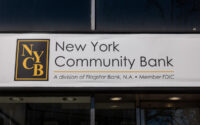Fed faces new inflection point amid troubling inflation data
Jay Powell warned last week that the Federal Reserve’s path to getting US inflation down this year was “probably going to be bumpy”.
But the Fed chair’s prediction of uneven progress became more tangible this week after the release of new batches of data showing the US economy is not cooling off as rapidly as hoped.
The result is that Powell and the rest of the Fed are grappling with a potential new inflection point in the economic outlook that could complicate their task and again wreck their policy plans and expectations.
On the one hand, Fed officials are more confident they will avoid a rapid slowdown or even a recession in the short term, which means a “soft” landing is still in sight. More unsettlingly, however, the central bank’s battle against high inflation appears far from over.
Having already raised interest rates from near zero to between 4.5 and 4.75 per cent over the past year, it looks increasingly likely the Fed will need to apply even more tightening than expected to cool the US economy.
“[The recent figures] just embolden the Fed to do more,” said Kathy Bostjancic, chief economist at the insurer Nationwide. “I think question the markets are wrestling with is: how much more? Will they stop at 5.5 per cent? Will they have to go to six? And whatever terminal rate they get to, they are likely to hold it there for longer.”
Economic data in recent weeks has hinted at the work still to be done. On Tuesday, figures showed an unexpectedly modest easing in the rise of consumer price index last month, to 6.4 per cent compared to a year earlier.
The following day, data revealed a surprisingly large increase in monthly retail sales in January, suggesting US households were still comfortable spending generously.
Both followed a surge in job growth for the month of January that blew past forecasts amid a persistently hot labour market. Price pressures are also proving stickiest in services that are notably labour-intensive, such as car repairs.
While the next Federal Open Market Committee is not until late March, and additional jobs and inflation data are expected before that, economists are already anticipating that officials at the central bank will raise their forecast for the path of its main interest rate at the meeting.
In their December projection, known as the “dot plot”, Fed officials forecast a so-called terminal rate of between 5 and 5.25 per cent this year, which implied just two quarter-point rate rises in 2023, but it now appears they could go higher.
“Pretty soon they will start preparing those March dots and that terminal rate is going to be moving higher,” said Michael Feroli, a senior economist at JPMorgan. He added that the Fed is constantly weighing the risks of “doing too much or too little”, and that “their most recent thoughts” will be concerns about the latter.
For Powell, who celebrated the fifth anniversary of his ascent to the helm of the Fed this month, renewed questions about whether the central bank is being sufficiently aggressive on inflation could be disconcerting. After price pressures started surging in late 2021, the Fed was forced to play catch-up, implementing massive 75 and 50 basis-point rate rises throughout last year.
By January, the Fed seemed to be back on track: the central bank was ready to dial back the pace of its rate increases to more traditional quarter-point increments, reflecting greater confidence it had price rises under control.
Over the past week, however, Fed officials have had to revert to more hawkish messaging. “It is clear that overall demand remains well in excess of supply and inflation is running far above our 2 per cent target. When it comes to monetary policy, we must restore balance to the economy,” said John Williams, the president of the New York Fed, on Tuesday. “We will we stay the course until our job is done.”
David Wessel, a senior fellow in economic studies at the Brookings Institution, said the Fed could no longer be accused of being behind the curve on price pressures, having restored its inflation-fighting credibility with its campaign of sweeping interest rate rises over the past year.
Instead, he said, the central bank is now back to more conventional policymaking, where it will be making moves in quarter-point increments depending on the data.
“They are back to the standard, which is feeling the stones with their feet as they cross the river,” he said. “They’ve raised rates a lot, and there are lags in monetary policy. You want to be careful that you don’t overdo it.”
That caution may be particularly warranted because January data can be especially unreliable — and the jobs, inflation and retail sales figures recorded last month may yet be reversed.
“January was very warm and very unsnowy compared to normal and weather effects like that do not persist,” said Ian Shepherdson of Pantheon Macroeconomics. “It does not follow that there is permanent strength.”
One bright spot for Powell in the recent patch of economic strength is that market expectations, which were starting to price in a more rapid end to tightening than the central bank, have now changed course and are more in tune with the Fed’s views.
“The market was in a sense behind the curve and has caught up to the Fed,” said Don Kohn, the former Fed vice-chair.
[ad_2]
Source link

